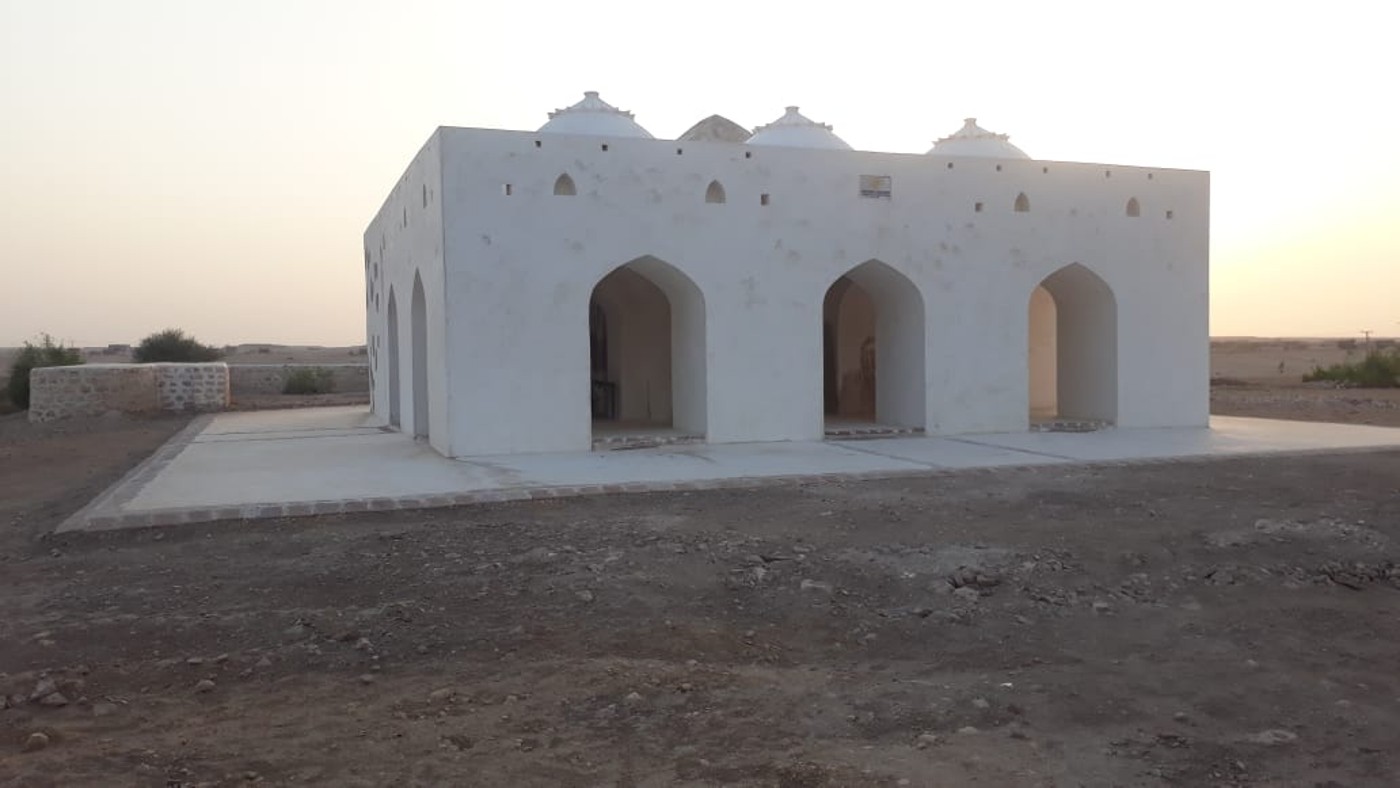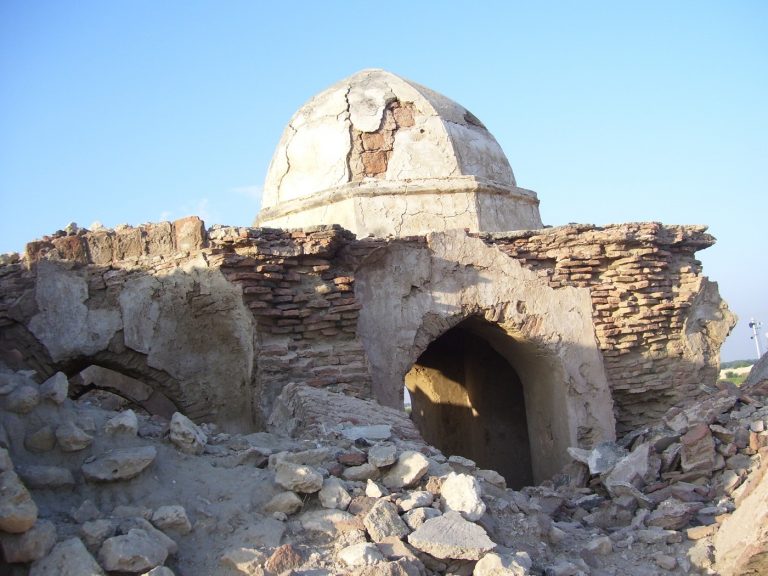
The Endowment Fund Trust has repaired it as an Otaq of Doolah Darya Khan but disfigured and built more than one dome while it had only one domed ceiling.
Aziz Kingrani
Calling a historic temple as the Otaq or Bethak Doolah (Traditional Rest House) of Darya Khan without any historical reference is distortion of history. The authenticity of this type of many historical places in Sindh has been lost. Due to unscientific research and unsubstantiated opinions of researchers and historians, the origin and background of the ancient sites has been obliterated.
Same case is here with a historical temple situated between Gopang railway station and a village of Khasai Shora tribe at a distance of 63 km North of Jamshoro and 14 km South of Manjhand, in Jamshoro district. This ancient temple has been turned into the sitting place of Kabuliyo Khan Sama alias Doolah Darya Khan, a commander of Sama dynasty in Sindh.
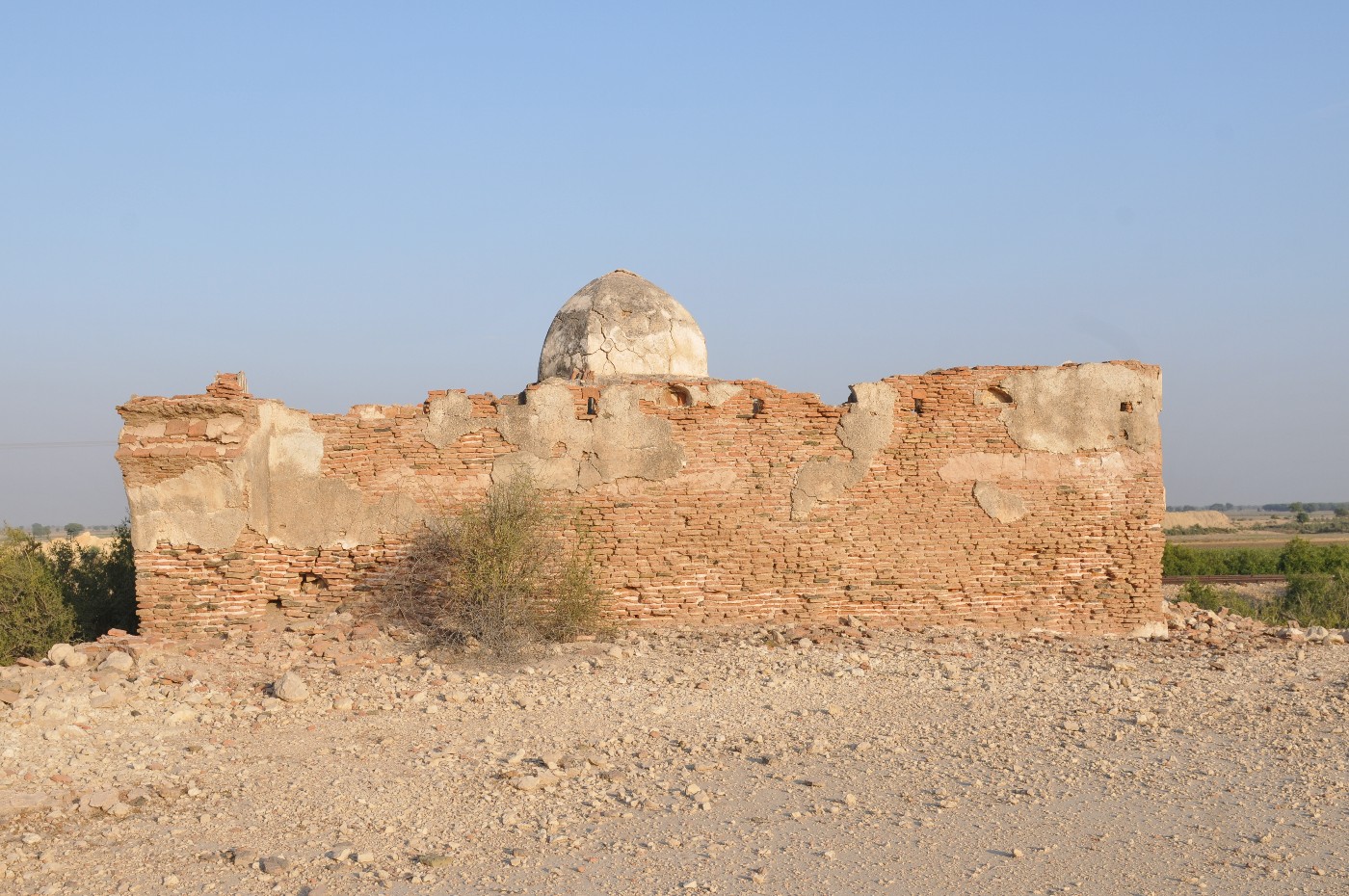
This historical misinterpretation or misinformation has been done in the light of the opinions of renowned archeologist late Syed Hakim Ali Shah Bukhari and historian Dr. Ghulam Muhammad Lakho.
Doolah Darya Khan was also a minister during the Samma rule in Sindh and his status was of the Prime Minister during the reign of Sultan Jam Nando alias Jam Nizamuddin Samo. According to historical accounts, Jam ascended the throne in 1461 and died in 1509.
In the history of Sindh, a controversy has been deliberately created over the name and tribe of Doolah Darya Khan. Actually he was Samo not Lashari by caste and his name was Qaboliyo. Doolah Darya Khan was martyred in 1521 or 1520 while fighting with Shah Baig Arghun in defense of Sama rule in Sindh. Jam Nando Khan was so pleased with him that he allotted him jagirs in the villages of Talti near Bhan Saeedabad (now Jamshoro district of Sindh) and Gaha village near Johi town (now Dadu district of Sindh). Both villages still exist near Lake Manchhar.
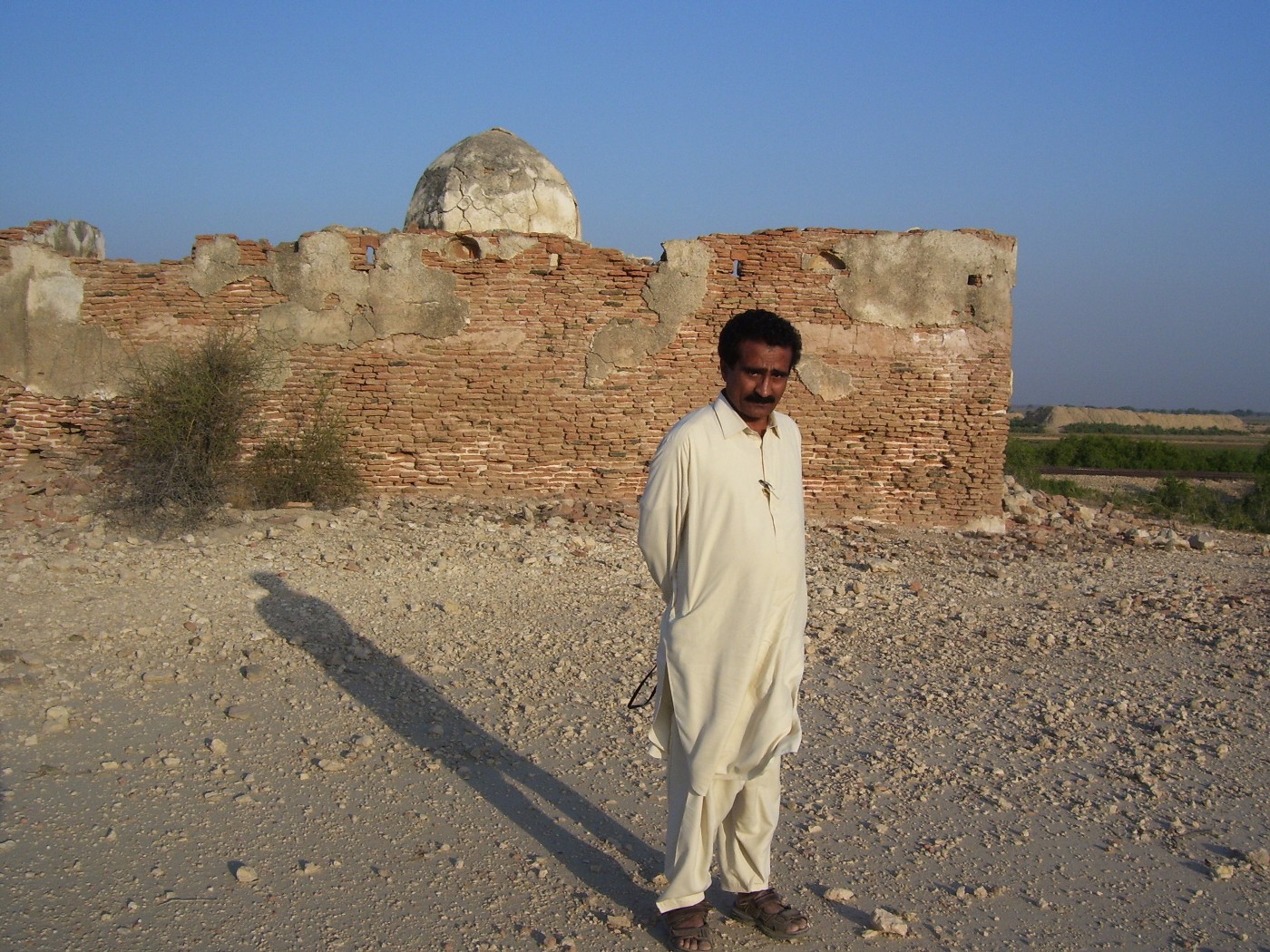
According to books on the history of Sindh – Tahfa-ul-Ikram and Janat-ul-Sindh, Darya Khan settled in Gaha village (near Johi town), where he established a madrassa for religious teachings. This madrassa was famous in all over Sindh and religious scholars like Maulana Yar Muhammad Abahri, Maulana Asir-ud-Din Abahri and Abdul Aziz Abahri came from Herat and started teaching here. Gaha village (now Syed Bihar Ali Shah) is located at a distance of 7 km southeast of Johi town.
In view of this, it is said with certainty that the so-called Bethak of Doolah Darya Khan was a religious site. But the construction of the building and the place itself shows that it was a temple, not Bethak. In the history of the subcontinent, even in entire Asia, there is no mention of this type of Bethak or Otaq with a dome.
Doolah Darya Khan has been linked to this old religious site without any reference of history or scientific research. The great proof is that there is no instance of such brick and gypsum material-made architecture in the Sama dynasty in Sindh. The Sama rulers built tombstones and mausoleums with carved stone slabs.
However, there are remnants of an old settlement near this religious site, so a short stay of Doolah Derya Khan at this place cannot be ignored on the way from Thatta (capital in Sama period) to village Talti or Gaha. During the journey, Darya Khan may have stopped somewhere near this religious place, but there is no historical evidence in this regard. It is safe to say that Darya Khan could not have built this temple type construction as Otaq. The historical record, especially of this place must be corrected.
In my view, this is a Shiva temple, because its construction is similar to another Shiva temple located near Manjhand, although this temple is older than the Shiva temple of Manjhind. I myself have visited this ancient temple many times. The front of the temple faces south-east and the back side to north-west.
Suppose it was a mosque, it would have a ‘mihrab’ in it and the rear part of the mihrab would be towards the Ka’batullah Sharif in the west. Thus, this domed construction cannot be an Otaq or a sitting place. This is a temple and it has a compound wall which is also dilapidated. This temple has three parts. The dome is in the middle. The baked bricks had been used in construction with gypsum (cheruli) material.
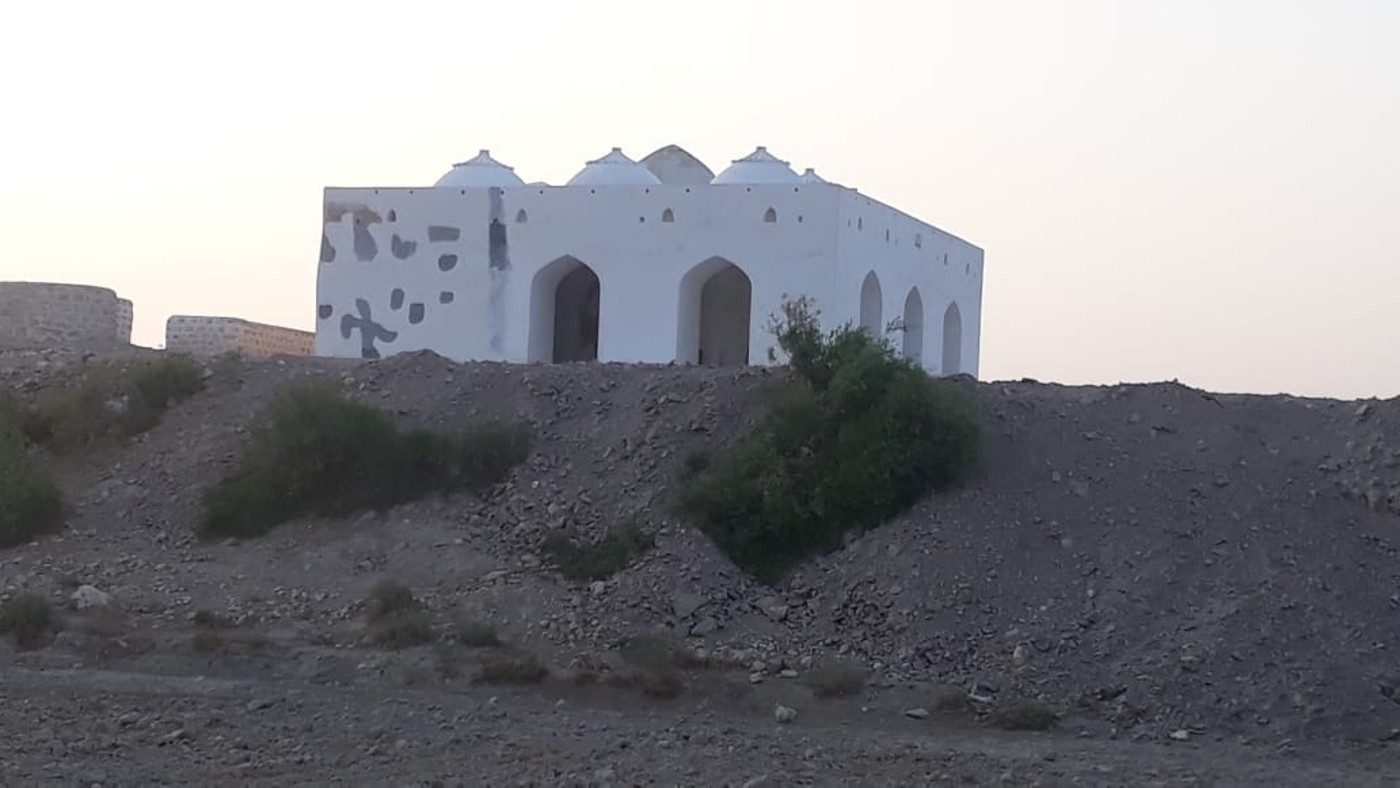
This historic site was in worse condition. There was only the dome and the back of the compound wall, which was in danger of collapsing. The Endowment Fund Trust (EFT) Karachi has repaired it as an Otaq of Doolah Darya Khan but it has become now disfigured due to restoration. EFT has built it with more than one dome while it had only one domed ceiling. Why and with what historical sources it has built more than one dome? EFT will answer.
The ancient structure has not only lost its originality but I think it is distortion of history. Now it looks a mosque-like rest house. The original construction of the temple is completely vanished which is a great loss of unique historical and cultural heritage of Sindh.
_________________
Aziz Kingrani, hailing from village Haji Manik Kingrani, Johi, Dadu District, Sindh, Pakistan, is poet, short story writer, playwright and a research scholar. He has been contributing in the fields of history and literature since five decades. He has served as a professor as well. His 17 books are published in English and Sindhi language. His articles in English, Sindhi and Urdu have been published in various newspapers and magazines.
